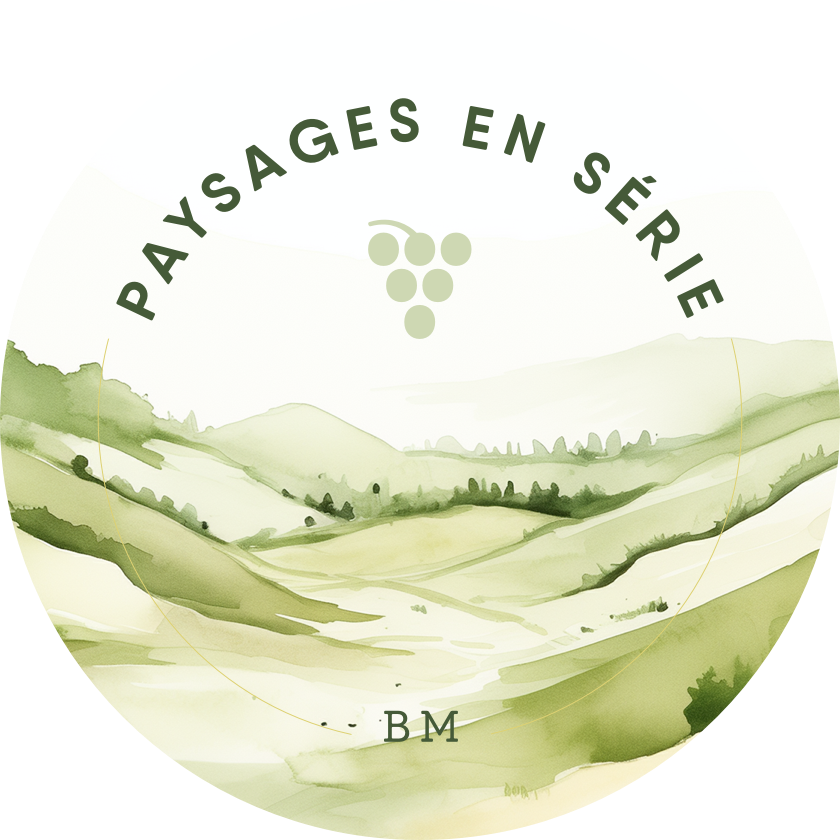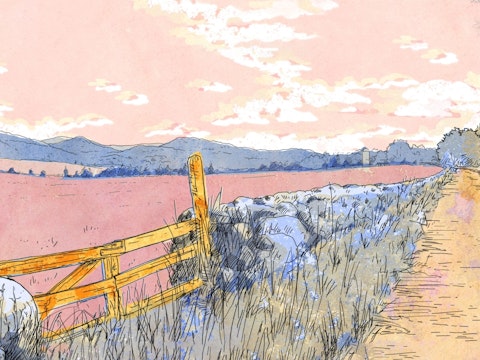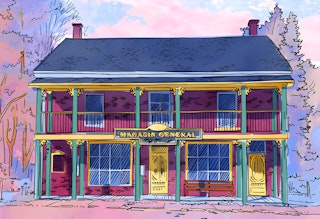Appalachian Ridges and Trenches
Crossing the foothills of Dunham, a line linking Bromont, Cowansville, Dunham and Frelighsburg, we enter the vast territory of the Appalachian ridges and trenches. The sector constitutes the most substantial series of Brome[LS1] -Missisquoi landscapes, occupying more than 40% of the MRC.


Between Mountains and Plains
This vast area, culminating at 300 metres (with the exception of Mount Pinacle, at 712 metres), marks the transition between the Appalachian Foothills and the Appalachian Massifs. In the heart of this panorama and its intertwining plateaus, slopes and valleys, we discover several farms showcasing their livestock and pastures.
To the north, where the territory tapers off, a large sedimentary basin shapes most of Lake Brome’s landscape. Here, the relief facilitated the development of roads, and later railways, thus establishing one of the birthplaces for tourism in Brome Missisquoi.

Suitable Land for Agriculture
The Appalachian ridges and trenches are made up of a series of heavily eroded shale plateaus. For millions of years, the effect of water on the environment created these mounds that shape today’s landscape. The ridges, because of their quartzite and dolomite content, were able to better resist erosion than the trenches which contained more friable sediments. These were, however, more conducive for agricultural endeavours.
The Selby Trench and the Alder Plateau were transformed into farmland and cultivated. As for the ridges, these became woodlands and occupied by secondary housing. Later towards the mid-20th century, agricultural advances allowed these slate and shale hillsides to be developed as well, resulting in the establishment of many orchards, notably in the Frelighsburg region. Several vineyards have also been thriving here over the last thirty years.

A Landscape with an Abundance of Hamlets
The main roads that span across this landscape of ridges and trenches offer truly stunning panoramas. However, Brome-Missisquoi’s glorious past was marked by all the hamlets established along the area’s smaller country roads.
In the 19th century, hamlets such as North Sutton, Draper Hill, West Sutton, all found on the Alder Plateau, moved to the beat of their natural resources which included forestry, potash and slate extractions. The discovery of copper near the sector of Rochers-Bleus, also led to a rush. In 1871, the arrival of the railways eventually brought about the demise of these small Alderian settlements by shifting their village and industrial activities to the Brome Valley and Sutton Valley regions.
Today, the southern Brome area’s farming activities, which has been going on for almost two centuries, still attract thousands of visitors to the town of Brome’s annual agricultural fair. This end-of-summer gathering is hailed as one of the province’s most important and oldest agricultural event (1856).

Fort Pinacle
Mount Pinacle is one of Brome-Missisquoi’s rare mountain territories to have preserved its natural state. With an elevation of 712 metres, it has also become a symbol of the struggle between development and conservation in the region. From 1985 to 1993, the mountain was at the centre of a great discord between stakeholders in favour of a large-scale recreational and tourism project and citizens’ associations wanting to preserve this natural environment. The dispute made its way up to the Supreme Court, and has set a legal precedent. In fact, this Frelighsburg saga was the inspiration for the television series “Sous un ciel variable.”

Landscapes Threatened by Gentrification
For newcomers in search of peaceful, pristine settings. The hillsides of the Green mountains account for more than a quarter of the MRC’s forest zones subject to residential construction.
The same can be said of resort areas such as Brome Lake, which was taken over by vacationers just a few years after the founding of the village of Knowlton. Today, Brome Lake has less than 30% of its shoreline still in its natural state. This has raised two major issues; The first concerns the protection and restoration of wetlands, necessary for the ecological functions of Lake Brome, which seems inevitable. The second, deals with the notion of the common good and access to the shoreline which remains complex in light of the current accelerated privatization of the landscape.

Ancien magasin général de Frelighsburg

Ancien magasin général de Frelighsburg
